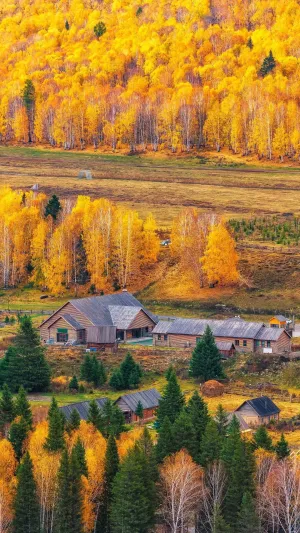As soon as autumn, the leaves began to become colorful. They have changed from green to red, orange or yellow. The process of discoloration is simply as magical as magic. So why does the leaves change color in autumn? To understand why the leaves change color in autumn, first of all, we must understand why they are green.
Almost in nature, plant leaves contain chlorophyll. Under the action of chlorophyll, the leaves absorb the energy in the sun and extract nutrients from water and carbon dioxide. Chlorophyll occupies important positions in plants. The chlorophyll in the plant is mainly involved in photosynthesis. It can absorb most of the red and purple light, reflects green light, so chlorophyll is green.
Like other substances, chlorophyll is constantly synthesizing and decomposing. It requires strong light and high temperature during its synthesis process. In spring and summer, because chlorophyll synthesis is greater than the amount of decomposition, chlorophyll can be supplemented in time. In the autumn and winter season, the amount of synthesis is less than the decomposition, and the decomposed chlorophyll cannot be supplemented. Therefore, this is why the leaves are green in spring, and yellow in autumn.
For the earth, it is like the lungs in people's bodies. It absorbs many toxic and harmful gases for us, and continuously releases fresh air we need to use for our breath.
In addition to providing humans with oxygen, trees will also perform steaming effects. The trees will humidify the air, as if a natural humidifier makes our environment more comfortable. In addition, in humid areas, large -scale planting trees can effectively reduce the groundwater level, thereby drying the ground. In short, planting trees in places that are too dry or too humid can play a role in regulating humidity balance.
For humans, a person can survive over the age of 100 and can already be called extremely longevity. At present, the largest trees discovered by humans can grow up to more than five meters high. And this kind of tree has a long life, and can usually survive for thousands of years.
The height and shape of the trees are also determined by genes like humans. However, the specific growth situation will still be affected by the various external factors of the tree growth environment. For example, light and moisture are important factors affecting the growth of trees. In addition, the height of the trees is also related to the thickness of the thin tube of the inner tube of the trees.
There are many small secrets of the annual ring of trees, such as identifying directions. So what is the annual ring? In each growth cycle of trees, trees will form a concentric wooden layer around them. This growing ring contour is called the annual ring. During the growth of trees, due to the impact of the surrounding environment and changes in climate conditions, the annual rings formed are different. During the growth of trees, the light on the south side is more sufficient and more conducive to radial growth, so the annual ring on the south side will be wider. In contrast, the annual ring on the north is narrower. Therefore, when we get lost in the woods, we can identify the direction according to the width of the annual ring.





